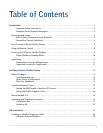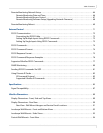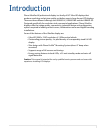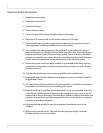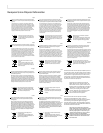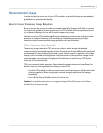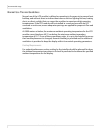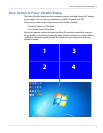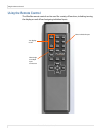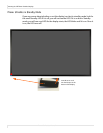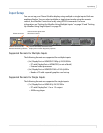
Recommended Usage
Planar UltraRes User Manual 5
Recommended Usage
In order to get the most out of your LCD modules, use the following recommended
guidelines to optimize the display.
Burn-In Versus Temporary Image Retention
Burn-in causes the screen to retain an image essentially forever, with little or no way
to correct the problem. Under normal use, an LCD module will not experience burn-
in, as plasma displays do, nor will it retain images in any way.
Normal use of an LCD module is defined as displaying continuously changing video
patterns or images. However, LCD modules can experience temporary image
retention when recommended usage guidelines are not followed.
What is Temporary Image Retention?
Temporary image retention (TIR) can occur when a static image is displayed
continuously for extended periods of time. An electrical charge differential may build
up between the electrodes of the liquid crystal, which causes a negative-color video
image (color-inverted and brightness-inverted version of the previous image) to be
retained when a new image is displayed. This behavior is true for any LCD device
from any LCD manufacturer.
TIR is not covered under warranty. See standard warranty terms and conditions for
details. Here are some guidelines to help you avoid TIR:
• Use the LCD module to show a screen saver, moving images or still pictures that
change regularly. When using high-contrast images, reposition the images
frequently.
• Turn off the Planar UltraRes when it is not in use.
Caution: For optimal performance, we suggest turning off the LED power on the Planar
UltraRes for four hours per day.



